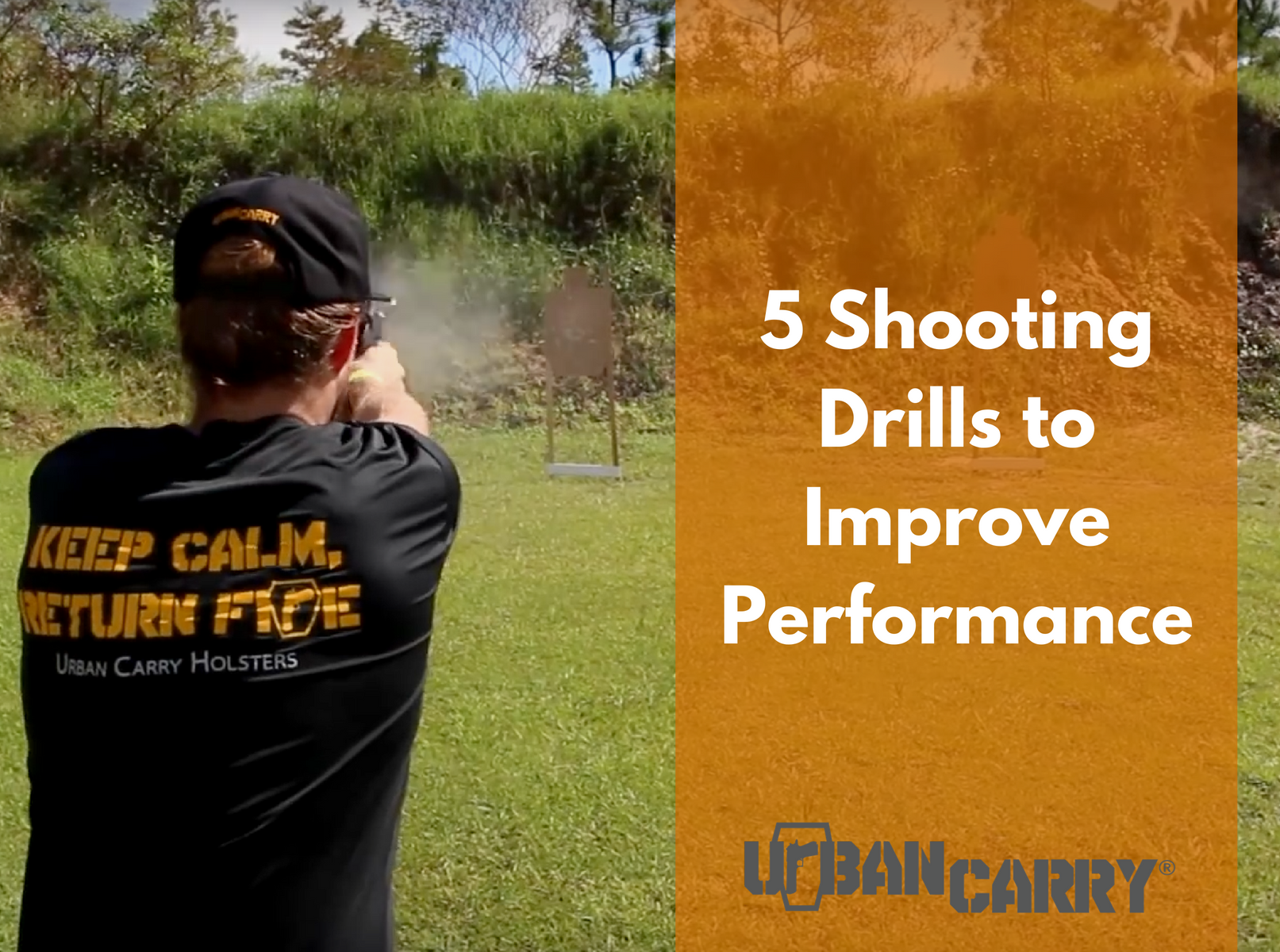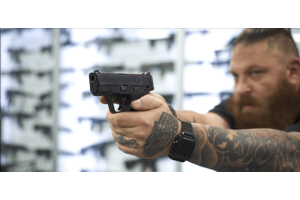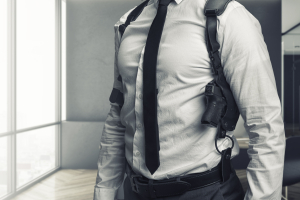Five Shooting Drills to Improve Your Self-Defense Abilities

Five Shooting Drills to Improve Your Self-Defense Abilities
(read to the end for the most important drill of all!)
It's well known that practice makes perfect. In the case of self-defense using a firearm, being perfect could be the difference between life and death. It's not enough, though, to simply take your handgun to the range from time to time; in order to feel confident that you are prepared for whatever comes your way, you need to practice shooting drills that are designed to train you for the types of self-defense situations you are most likely to encounter.
In this article, we'll cover a number of shooting drills that are recommended by some of the most qualified trainers in the world. Learn these drills, practice them often, and one day they may play a vital part in your self-preservation.
Why Shooting Drills Are Important
Before we dive into discussing some of the best shooting drills, it's important to start by explaining why these drills are important. Imagine for a moment that you're a basketball player and the only part of the game that you ever practice is shooting free throws. You'd no-doubt become accurate and quite good at hitting your target from that point on the court in that specific circumstance.
However, in all the other wide range of scenarios where the defense is pressuring you, where you're off balance, and where you're at different points on the court, you likely wouldn't be able to hit a single shot if free throws was the only thing you trained for.
The same analogy applies to using a handgun in a self-defense situation. It's great to take your firearm to the range and practice shooting it from a set stance and a set distance under set circumstances, as it allows you to become more familiar and more accurate with your handgun. However, this type of training alone is going to fall well short of preparing you for all the various situations you may encounter in a life and death scenario.
While there's no way to truly prepare for what it will be like should you ever have to use your firearm to defend yourself or others, shooting drills are designed to at least give you a taste of how these scenarios are most likely to unfold. If you practice them often, you can decrease the chance that you will be caught entirely off guard should a self-defense situation ever become a reality.
Shooting Drills That You Should Be Practicing
There are a large number of shooting drills designed to prepare you for an even larger number of scenarios, and the more you look, the more drills you're going to find. Below, we've outlined a handful of what we feel are the best shooting drills to start out with.
The Rangemaster Drill
The Rangemaster drill forces you to practice several important skills that could prove to be lifesaving in two worst-case scenarios. The first worst-case scenario is that your gun doesn't cycle the next round while you are using it to defend yourself and the second worst-case scenario is that you empty your only magazine and have to reload it in order to neutralize the threat. The steps of the drill are as follows:
1. Start by hanging up a target and positioning yourself about ten steps back.
2. Load your firearm with six live rounds (or as many as it will hold minus one) and one dummy round (which can be purchased here). Keep three extra rounds easily accessible on your person. If possible, have someone else load your firearm so you don't know the position of the dummy round in the magazine.
3. Fire at the target as rapidly and accurately as possible. When you come to the dummy round and the firearm does not discharge, clear the chamber and resume firing until the magazine is empty. Once the magazine is empty, drop it, load your three extra rounds into it, reinsert it, rack the slide, and continue firing until the gun is empty again.
4. Each time you draw your weapon, after you clear the dummy round, and after you reload, sidestep to one side or the other.
Prone Drill
There are several scenarios where you may find yourself firing from the prone position. If your assailant is firing back, you may have to get in the prone position to take cover, you may be forced into the prone position by being knocked down or injured, or you may fall down into the prone position after dodging a knife swing or other hand-to-hand attack. To train for this scenario, practice the prone drill, which goes as follows:
1. Set up a target twenty yards away and load two rounds into your handgun.
2. If possible, have someone with a buzzer or whistle and drop down into prone when it sounds. If practicing the drill on your own, try to drop down into prone without any mental preparation.
3. Once in the prone position, fire two rounds at the target.
Federal Air Marshal Service Qualification Test
Federal Air Marshals are tasked with being capable of stopping multiple terrorists with no backup and armed only with a handgun. With this being the case, they must prove that they are highly proficient with their firearm. The handgun qualification test that Air Marshals must past is also a great benchmark for concealed carry permit holders to test their skills. The steps for this drill are as follows:
1. With your weapon concealed in the holster, draw and fire one round at the target. Reholster your weapon and repeat. This step must be completed in 3.3 seconds or less.
2. From the low ready position, double tap the target twice for a total of four rounds fired. The total time for this step is 2.7 seconds.
3. From the low ready position, fire six rounds into the target in under 3.0 seconds
4. From the low ready position, fire one shot, change magazines, and fire again. Repeat this process once. This step must be completed in 6.5 seconds.
5. From the low ready position, fire one round each into two separate targets positioned three yards apart then repeat for a total of four rounds fired, two at each target. The total time for this step is 3.3 seconds.
6. With your firearm holstered and concealed, face uprange then turn 180 degrees, drawing your weapon as you turn and firing once at three separate targets placed three yards apart. Reholster your weapon and repeat the process once. The total time for this step is 7.0 seconds.
7. From the low ready position and with one round in your magazine, fire at the target. After the slide locks back, drop to one knee, change magazines, and fire again. Repeat this process once. The total time for this step is 8.00 seconds.
Hits in the bottle of the target on each stage are worth five points while hits outside the bottle are worth two. To qualify, Air Marshals must pass each stage in the allotted time and end the test with a total of at least 135/150 possible points.
Weak Hand Pickup
The weak hand pickup drill is another drill that is designed to prepare you for two different worst case scenarios, the first being that you drop your firearm and must retrieve it off the ground and the second being that you are forced to fire with your weak hand. The steps of this drill are:
1. Begin standing with your strong hand behind your back and the pistol on the ground in front of you with the butt of the gun facing your strong side.
2. On the buzzer, kneel down and retrieve the firearm with your weak hand and fire one shot into two targets from either a standing or a kneeling position.
Repeat this drill at different angles and distances to test yourself in off hand shooting from compromised positions.
Transition Drill
You won't always be able to count on having your hands at your side near your firearm when disaster strikes. This drill is designed to train you to quickly draw your firearm when your hands are not starting out in an optimum position. The steps of the drill are:
1. Begin with your hands at shoulder level and your pistol holstered.
2. On the buzzer, draw and fire one round at two targets.
This is a great drill to practice from the prone and seated positions as well. We’re never able to determine when we may need to defend ourselves, so it is always useful to practice from a variety of positions.
The Most Important Drill
The most important drill you can ever practice is situational awareness. Being aware of where you are, how you’re positioned, and who is around you will be your most effective tool in protecting yourself or others. By paying attention, we serve as our own early warning system, increasing the time we have to respond and get away from a dangerous situation or act defensively if needed.
If you’re reading this article, it’s probably safe to assume that you carry a concealed weapon, or are willing to defend yourself. If that’s the case, we’d highly recommend checking out the USCCA and their self-defense insurance options. If you ever are involved in an event where you have to use deadly force, then you need to be prepared for the after effects of that.
In our litigious society, insuring yourself against criminal or civil lawsuits can be the difference between returning to normal life or being bankrupted during the legal process. Learn more about the USCCA and their services here.
Conclusion
One thing to note is that the list of drills above is in no way a comprehensive list of the shooting drills you have available to practice. While practicing these five drills is a great start to get you comfortable with scenarios outside of the typical range practice, there are still countless other shooting drills that you may wish to incorporate into your range time.
By practicing these five drills and others, you can begin to prepare for what using your handgun in a self-defense situation might really be like - preparation that may one day prove to be lifesaving.










